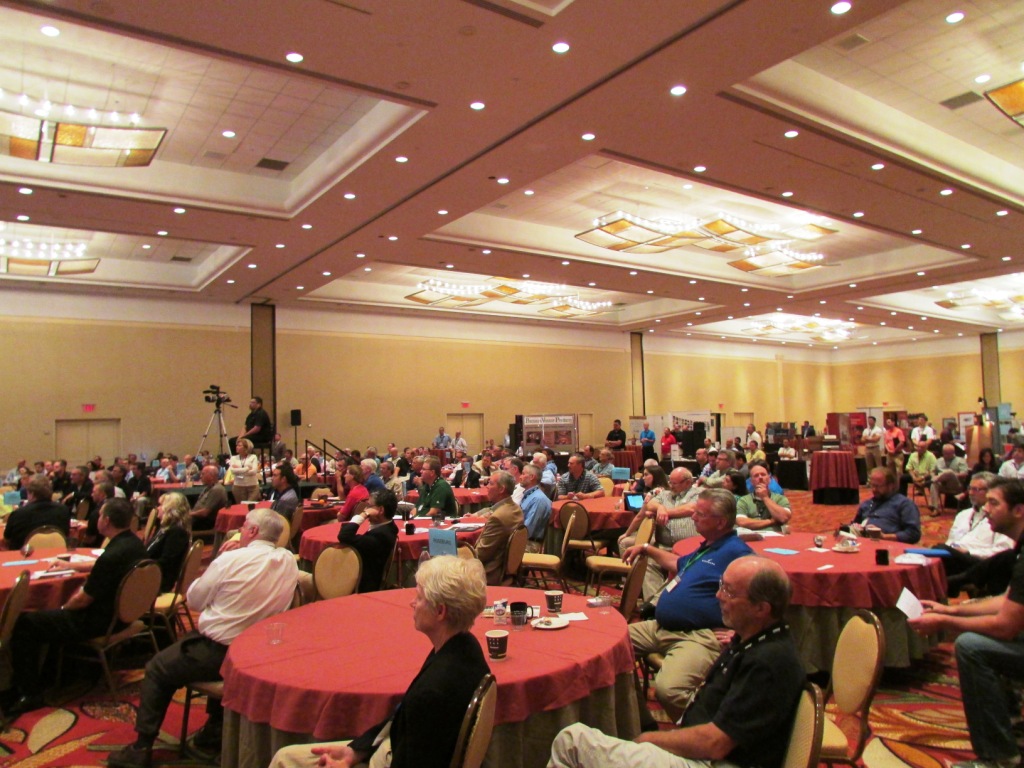 Architectural woodworkers, increasingly building with mixed materials, find little room for error once projects head from the shop floor to installation.
Architectural woodworkers, increasingly building with mixed materials, find little room for error once projects head from the shop floor to installation.
While this has always been true, the veneer panel, wood moulding and caework installation process has traditionally been more forgiving - allowing for tweaking and adjustments to take place to accommodate unforeseen electrical and plumbing, and dimensioning of project elements that are a scoche off.
But woodworkers are doing much more than woodwork, as attendees gathered at the Architectural Woodwork Institute 61st annual convention shared. Frequently asked to work with metal, glass, ceramic and acrylic, along with wood, architectural millworks are gaining competencies in forming and shaping new materials - or partnering with a firm that is already good at it.
|
The Architectural Woodwork Institute held elections and conducted association business during its gathering annual gathering in Orlando FL last week. • Randy Jensen, VP, Leonard Peterson & Co., becomes president of AWI, effective January 1, 2014, succeeding Mike Bell of Allegheny Lumber & Millwork.
• An updated Architectural Woodwork Standard publication will be issued in the first quarter of 2014, with a digital format available. • AWI is working on an updated website. awinet.org AWI's 2014 convention will be held in San Antonio, TX, Oct. 22-24. |
There is a business risk, say woodworkers, in managing projects that veer away from wood, or panel and solid materials that can be milled, formed and shaped similarly - where woodshops are best at adding value. Some projects are arriving with ancillary jobs for mounting components, or even overseeing other subcontractors, that have little to do with the overall architectural woodwork on a job.
"When there is not enough wood in it, we find ourselves becoming project managers," one exec told me. "We found we can't make money handling subcontractors." The project has to have enough forming or shaping of wood and related materials to allow the company to add value and make a good margin.
And non-wood materials, such as stainless steel or granite, are not readily trimmed on location. So a pre-build, or even modular pre-assembly or jobs into component sections, is growing in popularity. This also means that installations go quicker.
The other big change is communications, and computerization. A panel of woodworking execs told how to:
• inexpensively connect a production plant wirelessly to the front office
• communicate using social media with millenial generation clients - who don't e-mail or call, but instead text and post to Facebook.
"I have a general manager on a building project who is 26," said Jonathan Adams of AWI-member Adams Goup. "This is how the next generation communicates." Adams, who turned 30 the day of his presentation, recommended Salesforce.com's Chatter or similar chat applications as a way to communicate around a project, or internally. Added benefits: it records suggestions and ideas as they develop, and it eliminates floods of e-mails that actually diminish communications on complicated projects wth many layers and players.
Erik Fetzer showed how Fetzer Architectural Woodwork wired its Salt Lake City plant floor, inexpensively, using Bluetooth, $275 slim computer towers and even $50 computer cards to keep the entire manufacturing floor reporting interactively real-time to the office.
Eastern Millwork, which uses bar codes and RFID to track jobs through production and delivery to the client. "There is nothing worse than being told it didn't arrive, and then it turns up on the jobsite loading dock six months later." Eastern Millwork casework is wrapped for shipping with carboard tops and bottoms, but tough shrinkwrap around the sides, so recipients know the package is furniture, and should be handled carefully. The move has reduced damage significantly for Eastern Millwork.
Building Information Modeling, or BIM, figures big for architectural woodworkers. By automating the design drawing programs, all contractors and subcontractors who are linked to the applicatin can see all the dimensions of their project - not just their own area.
Here too, there is both upside and downside. Printing project plans, once a costly affair, is now a digital act. So general managers and designers readily submit revisions - and it's up to the architectural woodworker to "find the changes." Here software can also provide an assist, by automatically comparing generations of drawings to locate changes.






Have something to say? Share your thoughts with us in the comments below.